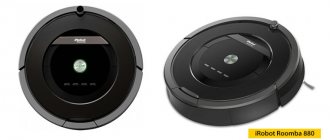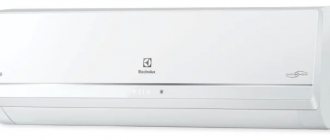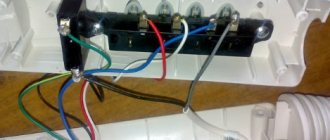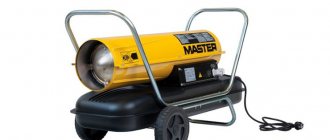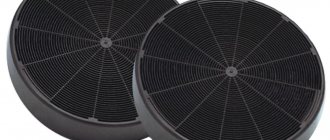The fan operation algorithm is based on moving air by supplying energy from a rotating wheel with blades, which is mounted on the motor shaft.
When the wheel rotates under the influence of centrifugal force, the air mixture is released into the atmosphere at a certain speed.
The devices are used not only as household appliances, but also in local ventilation systems and supply and exhaust equipment.
They are used to reduce the temperature of heating elements of heating and air conditioning mechanisms, as well as for blowing cooling radiators of various equipment.
Fan types
Based on the operating principle and design features, fans are divided into several types:
- diagonal;
- radial (centrifugal);
- axial (axial);
- bladeless;
- diametrical (cross).
Depending on the direction of rotation of the impeller, the ventilation device can be:
- right-hand rotation mechanism (the impeller rotates clockwise when viewed from the air suction side);
- left rotation mechanism (counterclockwise rotation).
Depending on the type of environment in which the fan operates, the mechanisms are divided into:
- Standard. The temperature of the transported medium (air or gas) does not exceed 80 degrees Celsius.
- Corrosion resistant. These units are used in corrosive environments.
- Heat resistant. Temperatures can exceed 80 degrees Celsius.
- Dusty. Used where the atmosphere is very dusty.
- Explosion-proof. Used in environments that are explosive.
According to their design features, fans are divided depending on the method of fastening the impeller and electric motor:
- with continuously variable transmission;
- with V-belt transmission;
- with tight mounting directly to the engine;
- with fastening on an elastic coupling.
Fans are divided into groups depending on the installation location :
- Standard. Installation on a special support. Its role is played by the foundation, frame and other fasteners.
- Duct. Such models are mounted in air ducts.
- Roof. Fastening is done on the roof of the building.
Ventilating mechanisms are divided into three categories based on the amount of pressure created when air moves:
- low pressure – up to 1 kPa;
- medium pressure – up to 3 kPa;
- high pressure – up to 12 kPa.
Fans are divided into types depending on the installation method :
- Desktop. Such models are intended for installation on an office desk; they are medium in size and equipped with a special stand.
- Floor. Installed directly on the floor, does not require additional fastening.
- Wall. The kit includes fastening elements for wall mounting. Dimensions may vary.
- Ceiling. These devices are mounted on the ceiling or inside the suspension system. The fan is controlled via a remote control.
Types
In addition to different types of designs, fans are divided into types that differ in the process of air supply. Axial ones are used most often in everyday life, since their cost is lower than that of their analogues. Radials come in second place in popularity. Bladeless models are rare to find because they are expensive due to their complex design.
Axial
The operating process of the device consists of axial movement of the blades using an electric drive. This option is most common in everyday life due to its low cost and practicality.
Radial
The column-shaped device has a built-in special cylinder with blades that squeezes out air under pressure. This mechanism is quieter compared to the axial one, and takes up little space. Some models are equipped with a 360 degree airflow radius.
Bladeless
A bladeless fan blows air into the room using a turbine. Air is sucked in by the device and squeezed out with high pressure. Due to its complex design, it is more expensive than its analogues, but it is the safest due to the absence of blades.
Principle of operation
Let us consider in detail each type of device according to the type of operation.
Axial
Externally, the device is a casing with a cylindrical base, which houses a wheel with blades. The casing has special holes for attaching the device.
The wheel with blades is installed directly on the axle. The air flow is parallel to the axis.
At the entrance to the mechanism there is a collector designed to improve the aerodynamics of the device. In the absence of counter flow, the power consumption of this type of mechanism is small.
If there is air flow, then more power is required.
The efficiency of the axial unit is much higher than other types of mechanisms. The pressure and amount of supplied air is regulated by rotating blades. Axial devices are usually used to supply large volumes of air at low resistance.
Diagonal
Air in such mechanisms is taken in according to the same principle as in axial models, but the exhaust is already in a diagonal direction. The casing is conical in shape, so the flow speed increases when pressure is applied to the fan propeller.
Diagonal mechanisms are characterized by high blowing speed and reduced noise level (compared to axial devices).
Radial
The centrifugal unit consists of an impeller located in a spiral casing. During rotation, the supplied air moves radially and begins to compress in the wheel area.
The flow then enters the spiral casing under the action of centrifugal force, after which it goes into the heating hole.
Structurally, the radial device is a hollow cylinder, on the surface of which blades are located parallel to the axis of rotation. They are fastened together with special disks.
These structural elements are made with curved ends, their number depends on the intended purpose of the unit. Rotation is carried out to the right or left.
In climate systems, several types of radial fans are used:
- Air intake in which occurs in one or both directions.
- In the design of the mechanism, the electric motor is located on one shaft or there is a V-belt drive.
- The blades in the device have a forward or backward curved shape.
Backward curved blades increase performance and save energy.
Diametral
This category consists of a housing with a nozzle and a diffuser, the impeller is equipped with forward-curved blades. The wheel looks structurally like a drum. The operating principle of such a mechanism is based on the double passage of air across the impeller.
Diameter fans have high aerodynamic performance. They are capable of delivering a uniform air flow over a limited range.
Structurally, the device is designed in such a way that it can be easily turned to the sides, giving the air masses the desired direction. This type of units is used in indoor units of split systems, air curtains and other air conditioning and ventilation systems.
Bladeless
The main element of the device is a turbine; the air flow is formed due to its operation. This element is hidden at the base of the body. The air flow moves through the slots in the frame due to the aerodynamic effect.
The frame profile configuration contributes to air rarefaction; it is additionally sucked in from the rear side of the housing.
The total flow volume increases up to 16 times (compared to the performance of a single turbine). Bladeless fans are quite noisy, but there are no external moving elements, which makes a rotorless device safer.
How does the fan work?
Since the drawing of the device is protected by copyright, we will talk about the operation of the fan, based on the drawings used in the advertising of this product.
How does a bladeless fan work?
Explanation of the picture:
- A – holes for air supply to the turbine.
- B – turbine engine.
- C – air flows inside the ring.
- D – ring.
When turned on, the turbine begins to pump air into the ring, from where it exits under pressure into a small slot (A in Fig. 5) or small nozzles.
Rice. 5. A - Slot for air outlet; B – motor for rotating the ring
Some models (for example, Flextron FB1009, KITFORT KT-401, HJ-007, Bork) have a built-in motor (B in Fig. 5), which allows you to change the direction of the ring, and, consequently, the air flow. Some manufacturers have provided the possibility of installing a special aerosol into the design; as a result, Airmultiplier Dyson (that’s what Dyson called his brainchild) additionally acts as an air freshener (part of the Kitfort, Supra, Renova, Vesson model range).
There are bladeless fans with air cooling and heating; such household appliances can be classified as full-fledged climate control equipment.
Original devices are produced with a power unit (turbine) with a power of 25 or 40 W. For Chinese analogues, this parameter can vary over a wide range. Such a small power is quite enough for up to 500 liters of air per second to pass through the ring (again, this value applies to original products).
Fan characteristics
- Total pressure is measured in pascals.
- Air consumption or mechanism performance is measured in cubic meters per hour.
- The rotational speed of the impeller is measured in revolutions per minute.
- The power consumption that is expended to drive the device is measured in kilowatts.
- Sound pressure, or noise level, is measured in decibels. This indicator is determined from the side where air is sucked in, and in those places from where the flow enters the room.
- Efficiency. The indicator takes into account aerodynamic losses, losses due to leaks through thickenings, power losses due to friction in various parts of the mechanism.
Theoretical calculations of network characteristics
Where:
ΔP—total fan pressure (Pa),
qv — air flow (m3/h or l/s),
k is constant.
Example
The fan delivers 5,000 m3/h at a pressure of 250 Pa.
A. How to graph network characteristics?
a) Place a point on the fan characteristic (1), where the pressure is 250 Pa and the flow rate is 5,000 m3/hour.
Enter this value into the above formula to obtain the value of the constant k.
k = ΔP / qv2 = 250 / 50002 = 0.00001
b) Select an arbitrary pressure reduction, for example, 100 Pa, calculate the air flow and place a point (2) on the graph.
c) Do the same for 350 Pa and place point 3 on the graph.
d) Now draw a curve that will show the characteristics of the network.
B. What happens if the network pressure increases by 100 Pa, for example, due to a clogged filter?
a) Calculate the coefficient for the new network characteristic: k = 350/5000 (2) = 0.000014
b) Select two other pressure drops, for example 150 and 250 Pa, and calculate the air flow for them.
m3/h m3/h c) Construct two new points (2 and 3) and carry out a new characterization of the network.
The new operating point (4) is located at the intersection of the fan characteristic and the new system line.
This graph also shows that an increase in pressure also causes a decrease in air flow to approximately 4,500 m3/h.
Functions
Ventilating units have a number of additional functions that make the mechanism more efficient and convenient to operate:
- Hydration . Allows you to cool the room without drying out the air. The device increases the cost of the product, but is good for health.
- Ionization . Purifies the air and restores the balance of negative ions. The ionizer is very useful for children, elderly people and anyone who spends a long time at the computer. It is recommended to use such a device during seasonal illnesses.
It is strictly forbidden to use an ionizer:
- for oncological diseases,
- elevated body temperature,
- after operations,
- for bronchial asthma,
- in very dusty rooms,
- in case of circulatory disorders in the brain,
- with increased sensitivity or individual intolerance to ionized air.
- Rotary system . The system allows you to direct flows in any desired direction.
- Timer. Allows you to program the fan on and off mode.
- Hydrostat . Bathroom ventilation unit, which is equipped with a humidity sensor. The mechanism turns on automatically when a certain humidity is reached. This parameter allows you to control the humidity level in damp rooms.
- Motion Sensor. Allows you to automatically turn on the ventilation system when a person appears in the room. The shutdown occurs after a period that is set by a timer.
- Watch . They are located on the main panel of the device.
- Ventilation. The constant ventilation mode involves operating the device at low speed, ensuring minimal air exchange. If the humidity increases, the mode switches to maximum.
- Splash protection. With this parameter, special models of units are produced that are intended to be used in rooms where there is constant splashing of water. Splash protection on the device is indicated by the IP*4 marking.
- Check valve . The function is useful when one ventilation system is installed in a room with several rooms. Valves allow you to start the system selectively and block access to certain rooms.
Purpose and use of household fans
In apartment buildings, there are exhaust vents in bathrooms and kitchens. Unfortunately, their power is rarely enough to ensure proper air exchange. In old houses, ventilation shafts are often clogged with dust, dirt or construction debris. The draft also depends on the floor on which the apartment is located (the higher, the worse the draft) and even on the time of year. In summer, the temperature difference between outside and inside the house, which actually ensures the movement of air masses, is minimal.
Testing the power of the hood is easy. It is enough to attach a sheet of thin paper to the grille. If the draft is good, the sheet will stick firmly to the hood, otherwise it will float smoothly to the floor, forcing the owner to think about the need to install a household fan.
Based on their design, fans are divided into 3 categories:
- Exhaust. Used to remove exhaust air.
- Inlet. They are installed in rooms where there is no need to remove polluted air; an influx of fresh air from the street is sufficient.
- Supply and exhaust. They combine the functionality of the first two categories. They remove polluted air masses while simultaneously providing an influx of fresh air.
According to the installation method, devices are classified as follows:
- Overhead (Wall). They are mounted on the wall, directly adjacent to the hood opening. Easy to install.
- Duct. Placed inside the air duct. Without proper vibration protection they can be quite noisy.
A standard household fan is a hollow plastic cylinder with a compact electric motor inside. The fan blades are attached externally to the axis coming from the engine.
Due to their simple design, household fans are relatively inexpensive. However, the price largely depends on the performance of the device, the popularity of the brand and the availability of additional functions.
We recommend that you read: Air ducts as part of a smoke removal system
Equipment and accessories
The standard kit includes fasteners and other parts for installation. The equipment depends on the type and type of mechanism.
Accessories for fans mean all their components, as well as additional equipment that simplifies the operation of the unit:
- Protective grilles of different sizes and designs.
- Batteries for autonomous operation. The batteries are designed to last for several hours, can be recharged up to several hundred times, and also save electricity.
- Rain protection.
- Control unit with temperature sensor. Helps to remotely control the mechanism and monitor various parameters.
Which one is better to choose?
- For an office or small room, a table fan is suitable; it is convenient to place it in different parts of the space, on a closet, on a table on shelves. Choose a model with a rotating body to allow airflow into a larger space.
- If you want to feel like you are at sea, feel the coolness of the south wind, choose a model equipped with a breeze imitation mode.
- If you need the fan to work at night and not disturb your sleep, choose a unit with a night mode that operates quietly and efficiently.
- For convenience and comfortable control of the ventilation device, purchase models that include a remote control and a timer.
- For large rooms, it is recommended to purchase large fans with the ability to rotate the housing.
- Column models do not have blades; they are considered the safest compared to other types.
In addition to all standard types, there are stationary ventilation systems that perform their duties just as well and make the air cleaner.
Ventilation and air conditioning systems are installed in any premises that require constant air renewal.
Which fan to choose for your home: criteria
Diameter, material and number of blades
Depending on the area of the room, you need to choose the appropriate diameter of the blades. For an ordinary apartment, standard sizes will be sufficient - 40–50 cm. The larger the blades, the larger the radius of air coverage.
The number of blades affects the speed of air flow. If you choose a model with more blades, then the air will be supplied more strongly, but such devices consume more energy and affect the longevity of the electric drive.
On budget fans, the blades are made of flexible plastic; in the case of expensive models, the design can consist of both plastic and metal. These characteristics do not affect the quality of the air supply.
Power by room area
The more powerful the fan, the more massive and further it pushes the air. This parameter is more relevant to exhaust duct devices. There is a conditional rule by which the appropriate fan power is set. We measure the area of the room horizontally and vertically, and multiply the resulting amount by 4. The final figure will indicate the power requirements of the device.
For a floor structure, square meters are calculated, since only the horizontal area where air circulation will occur will be involved in the process. The power of conventional models usually does not exceed 50 W.
Performance
Productivity is usually measured in cubic meters. You can see these characteristics in the device passport. The calculation is based on the area and the regular number of people present. For a room 8x10 m, a fan with a blowing area of 50 m will be enough.
Number of speeds
This function is found in almost all fans. In budget models, up to 3 speeds are installed, in expensive ones you can see 7 transitions. Switching speeds affects the speed of the blades. This is a convenient feature that will allow you to adjust the air flow depending on the temperature in your home.
Air strike
This term indicates the distance a fan is capable of blowing. The characteristics directly relate to the drive power and the density of the blades on the axis. The air strike parameters are also indicated in the passport. If your room is small, then 40–60 cubic meters is quite suitable for a floor fan, and 20–35 for a desktop unit.
Air exchange
Such a characteristic as air exchange refers to duct exhaust devices. Here you will also have to calculate the area of the room and compare it with the characteristics in the passport. This is determined by the multiplicity in hours. That is, how many times in an hour the air in the room will completely change. Let's take standard indicators:
- kitchen – 5–12 times per hour;
- bathroom/toilet – 5–9 times;
- bedroom – 3–7 times.
For the optimal ratio, measure the cube. area and multiply it by the standard air exchange characteristics of the corresponding room.
Airflow area
This characteristic applies to floor and tabletop models. Its value indicates the area that the fan can blow. Standard models cover an average of 40-50 m, but if you have long or large rooms, then it is better to look at a more expensive fan, otherwise the air will not reach the other end of the room. The blowing area directly depends on the engine power.
Tilt and rotation angle
Almost all modern fans are equipped with rotary axes, the only difference is in the degrees of rotation. The most common models are those with a horizontal rotation of 180 degrees, but you can also choose 45 and 360 degrees. This characteristic will largely depend on the cost of the fan. The automatic rotation function only works in the horizontal position; you will have to adjust the vertical position yourself.
Noise level
Check the noise level immediately before purchasing. Let the consultant unpack the fan and start it up, switching the blowing speeds. The standard quiet value should not exceed 40 dB. If you will turn on the fan in the bedroom, then choose a model with a noise level of no more than 30 dB.
Airflow mode
The indicator directly depends on the number of blades. Different types of fans can have from 2 to 10 blades on the axis. Accordingly, the device will blow air over the area depending on the rotation speed. There are models with automatic air flow changes, they are called climatic. According to customer reviews, this mode is not very useful.
Control block
Standard fans usually have 4 buttons: 3 speeds and stop. You can also see the backlight button, however it does not shine on the panel or fan blades, this switch indicates the exact location of the device in the dark. Expensive models are equipped with displays that show the flow rate, room temperature, clock and shutdown timer.
Remote control
Using the remote control, you can adjust the fan settings without going near it. This is not to say that this is an important function, but it is relevant for older people. There are remote controls with LCD displays, with which you can also adjust the device settings.
Timer
Models with a display have a countdown timer that allows you to set the on and off times. It is convenient to activate the function before going to bed.
Ionizer
Air ionization has a positive effect on the human body. With the help of aeroions, you will sleep better, become more active and speed up your metabolism. The ionizer also draws in harmful oxygen elements, purifying it from dust and gases.
Humidifier
The humidifier is sold as a separate device, but it can also be integrated into the fan itself. For this function, a corresponding fluid tank is located on the structure. The big advantage of using a humidifier is that the released moisture will be blown out along with the air, taking up a large area of the room. Expensive fans have an indicator indicating the water level in the tank.
Adjustable
Control of conventional fans is based on a panel with buttons. With their help you set the flow rate or timer. In the list of expensive models you can see an automatic regulator that will monitor air temperature, humidity and pressure. The built-in sensor will automatically start or turn off if the humidity or temperature levels go beyond certain limits. The high cost of such models is due to their complex design.
Protective grille
The blades of each floor axial fan must be protected with a mesh. It can be made of either metal or rough plastic. As for table fans, in some models this factor is not necessary, since due to the low power and small blades, the chance of knocking it over is insignificant. However, choose better protected models, regardless of the type, as the device can catch hair or accidentally injure you.
Sustainability
Floor fans come in different designs. Usually the rack lies “crosswise”, secured with bolts. Desktop devices have different mounting options. Designed specifically for the monitor, they are attached using a special clothespin, but there are also devices with suction cups.
Certificate
Before purchasing a fan, ask your consultant for a passport and quality certificate. Typically, the documents describe the device parameters and the level of assembly guaranteed by the manufacturer.
Exploitation
When operating fans under standard conditions (GOST), the device will last a long time. The terms of use are as follows :
- Atmospheric pressure is about 100 kPa.
- The indoor air temperature varies within 20 degrees Celsius.
- The air density should be no more than 1.2 kg per square meter.
- The relative humidity of the room reaches 50 percent.
It is important to note that it is not possible to accurately calculate all pressure losses, so it is recommended to purchase devices with a pressure reserve of approximately 15 percent.
Warranty and faults
The warranty period for fans depends on the purpose of the unit and the manufacturer. The guarantee for uninterrupted operation of the device is provided provided that it is used in accordance with the rules specified in the user manual.
If your fan is not working in your home, first make sure it is plugged in. If it still does not turn on, then you need to identify the cause of the breakdown by contacting a service center.
The cost of repair depends on the price of the broken part and the price list for the repairman’s services. If you know at least a little about technology, and the product’s warranty period has already expired, then you can repair the fan yourself.
Fan Manufacturers
Bork
On the official website you will find all the products offered by the company: kitchen appliances, climate systems and devices for the home. The products are of high quality, but the prices are above average.
The company offers a large selection of climate control devices, including several types of fans.
Maxwell
The company offers on its website all kinds of appliances for the home, kitchen and beauty, as well as climate control equipment. The company offers table, floor and thermal fans.
The price category of these products is quite acceptable for the average buyer.
Mystery
The company's website presents household appliances, auto electronics and audio-video equipment.
Polaris
The entire range is presented on the website. The company offers for sale various types of fan heaters, as well as several floor and tabletop models of household fans.
Rolsen
The Rolsen company sells appliances for the home, automobile and beauty. On the company's website in the climate equipment section you will find several types of floor and table fans.
Scarlett
The company sells watches, kitchen, home and beauty appliances. The company's official website presents several types of climate control equipment.
Supra
On the company's website you can find not only home appliances and climate control equipment, but also a huge selection of dishes, lamps, tablets, TVs and much more.
Timberk
The Timberk company is focused only on products of climate control, thermal and water heating equipment. You can find all the information on the website.


